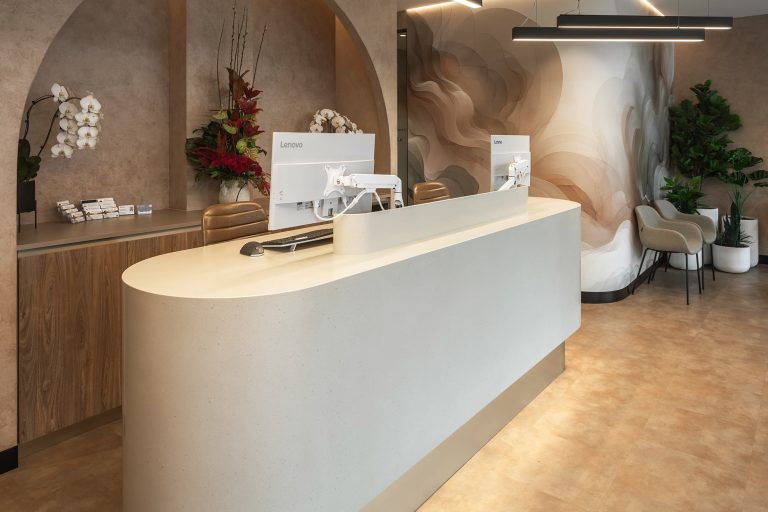Productivity increases when employees are most comfortable in their surroundings. Office design decisions made during the fitout process can have a positive impact on the amount and quality of work that your office produces.
Temperature
It is recommended that an ideal workspace sit at a temperature between 21°C and 24°C in summer and 19°C and 22°C in winter. An office space that is too hot or too cold will decrease productivity and create disgruntled staff that are unable to focus.
Flooring, wall type, lighting, and heating and cooling systems will all have an effect on your office temperature. Understanding the space you are fitting and what its natural response to external temperature is will allow you to balance the factors within your control that will influence temperature.
Lighting
Government standards dictate that work spaces must have adequate lighting for employees to work and move around safely in.
Where possible, natural lighting is best. Natural lighting improves mood and stops staff from feeling like they are couped up and disconnected from the outside world. There are even links between natural light and good mental health.
If you don’t have a great deal of natural light it isn’t the end of the world. Where utilising natural lighting isn’t possible the lighting you choose should mimic the brightness and colouring of sunlight. A light that gives off dim, yellow-coloured lighting isn’t what humans are accustomed to and will limit productivity at work.
Furniture
In most corporate situations the majority of a work day is spent at a desk in a chair. It is important that the 40 hours your staff spend at work a week aren’t having a negative impact on their body.
Desks and chairs should be at a suitable height that makes the employee comfortable. Monitor height should be positioned at eye level to maximise the quality of work produced.
Bad chairs can cause a whole world of pain and ongoing health issues. Ergonomic chairs that foster natural and comfortable sitting positions will increase comfort and productivity among staff.
Walls
What type of office are you? Do you work collaboratively for a large portion of your day or do you predominantly work individually? Partitioning choices you make during a fitout should reflect this.
Open spaces with no or low partitions will foster collaborative, creative workspaces. A recent shift to open plan offices has seen large workspaces where everyone works in the same room which is excellent for group productivity.
Many businesses don’t benefit from the new open layout preference, however. There is sometimes a need for privacy or solitude while working – a lawyer or accountant for example. Higher partitions or offices will allow productivity to thrive in these environments that demand individual space.
At Perth Citi Fitout we take the time to know you and your business before making any recommendations. Contact us today to create a workspace that maximises your productivity.



